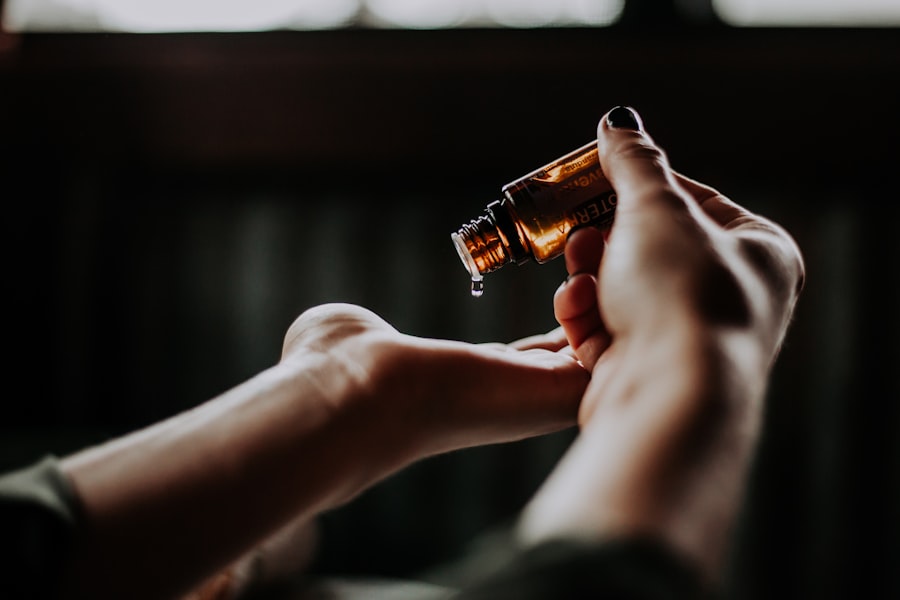When you consider laser hair removal, it’s essential to understand the process and what you can expect from it. This advanced technique utilizes concentrated beams of light to target hair follicles, effectively reducing hair growth over time. As you prepare for your treatment, you may find it helpful to know that the procedure is designed to be both efficient and relatively painless.
Many individuals report feeling a slight tingling sensation during the treatment, akin to the snap of a rubber band against the skin. This sensation varies depending on your pain tolerance and the area being treated. You should also be aware that laser hair removal is not a one-time solution.
It typically requires multiple sessions to achieve optimal results, as hair grows in cycles, and the laser is most effective on hair in the active growth phase. After your initial consultation, your practitioner will develop a personalized treatment plan tailored to your specific needs, including the number of sessions required and the intervals between them. Understanding these aspects will help set realistic expectations and prepare you for the journey ahead.
Key Takeaways
- Laser hair removal targets hair follicles to reduce hair growth over time
- Shave the treatment area before your appointment, but avoid waxing or plucking
- Expect some discomfort during the session, but most people find it tolerable
- Apply soothing creams and avoid sun exposure after treatment
- Redness and irritation are common side effects, but they should subside within a few days
Preparing for Laser Hair Removal: Before Your Appointment
Preparation is key to ensuring a successful laser hair removal experience. Before your appointment, you should avoid sun exposure for at least two weeks. Tanning, whether from the sun or tanning beds, can increase the risk of complications and may affect the efficacy of the treatment.
If you have recently tanned, it’s advisable to reschedule your session until your skin has returned to its natural tone. Additionally, you should refrain from waxing or plucking hair in the treatment area for several weeks prior to your appointment, as these methods can disrupt the hair growth cycle that the laser targets. Another important step in your preparation is to shave the area being treated 24 hours before your session.
Shaving allows the laser to focus on the hair follicle rather than the hair above the skin’s surface, enhancing the effectiveness of the treatment. You should also discuss any medications or supplements you are taking with your practitioner, as certain medications can increase sensitivity or affect healing.
During the Laser Hair Removal Session: What to Know
On the day of your laser hair removal session, you will likely arrive at the clinic feeling a mix of excitement and nervousness. Once you check in, a technician will guide you through the process, explaining each step along the way. You may be asked to wear protective eyewear to shield your eyes from the laser light.
The technician will then apply a cooling gel or device to your skin to minimize discomfort during the procedure. This cooling mechanism is particularly beneficial in ensuring that you remain comfortable throughout the session. As the treatment begins, you will notice that the laser emits pulses of light that target your hair follicles.
Depending on the size of the area being treated, each session can last anywhere from a few minutes to over an hour. While some individuals may experience mild discomfort, many find that it is manageable and worth enduring for long-term results. After completing the session, your technician will provide you with immediate aftercare instructions and may apply a soothing lotion to help calm any potential irritation.
Post-Treatment Care: Aftercare Instructions
| Aftercare Instructions | Details |
|---|---|
| Medication | Take prescribed medication as directed by the doctor |
| Wound Care | Keep the wound clean and dry, change dressings as instructed |
| Physical Activity | Follow the recommended level of physical activity or restrictions |
| Diet | Follow any dietary restrictions or recommendations |
| Follow-up Appointments | Attend all scheduled follow-up appointments with the healthcare provider |
After your laser hair removal session, proper aftercare is crucial for achieving optimal results and minimizing side effects. You may notice some redness or swelling in the treated area, which is entirely normal and should subside within a few hours to a couple of days. To aid in recovery, it’s advisable to avoid hot baths, saunas, or vigorous exercise for at least 24 hours post-treatment.
These activities can exacerbate irritation and increase sensitivity in the treated area. Additionally, you should apply sunscreen with a high SPF to protect your skin from UV rays, especially if you plan to be outdoors. Your skin will be more sensitive following treatment, making it essential to shield it from potential damage.
If you experience any discomfort or irritation beyond what was discussed during your appointment, don’t hesitate to reach out to your practitioner for guidance on how to manage these symptoms effectively.
Managing Side Effects: Dealing with Redness and Irritation
While most individuals tolerate laser hair removal well, some may experience side effects such as redness or irritation in the treated area. If you find yourself dealing with these symptoms, there are several strategies you can employ to alleviate discomfort. Applying a cold compress can help reduce swelling and soothe irritated skin.
You might also consider using over-the-counter hydrocortisone cream or aloe vera gel to calm inflammation and promote healing. It’s important to remember that everyone’s skin reacts differently to treatments, so what works for one person may not work for another.
They can provide tailored advice based on your specific situation and recommend additional treatments if necessary.
Long-Term Maintenance: Tips for Keeping Your Skin Smooth

Once you’ve completed your initial series of laser hair removal sessions, maintaining smooth skin becomes a priority. While many individuals enjoy long-lasting results after their treatments, some may require occasional touch-up sessions to address any regrowth. To keep your skin looking its best between appointments, consider incorporating gentle exfoliation into your skincare routine.
This practice helps remove dead skin cells and can prevent ingrown hairs from forming. Additionally, staying hydrated and maintaining a healthy diet can contribute positively to your skin’s overall appearance. Drinking plenty of water helps keep your skin supple and can aid in recovery after treatments.
You should also continue using sunscreen daily to protect your skin from UV damage and maintain its health over time.
Monitoring Progress: Tracking Hair Regrowth and Follow-Up Sessions
As you progress through your laser hair removal journey, monitoring hair regrowth is essential for assessing the effectiveness of your treatments. After each session, take note of how quickly hair returns and whether it appears finer or lighter than before. Many individuals find that hair regrowth slows significantly after several treatments, leading to smoother skin over time.
Your practitioner will likely schedule follow-up appointments based on your progress and individual needs. It’s important to attend these sessions as recommended to achieve optimal results. If you notice any changes in hair growth patterns or have concerns about your progress, don’t hesitate to discuss them with your practitioner during follow-up visits.
Additional Considerations: Special Precautions for Different Skin Types
When considering laser hair removal, it’s crucial to recognize that different skin types may require special precautions or adjustments in treatment protocols. For individuals with darker skin tones, there may be an increased risk of hyperpigmentation if not treated correctly. Therefore, it’s essential to choose a practitioner experienced in treating various skin types who uses appropriate technology designed for safe use on darker complexions.
Conversely, those with lighter skin may have different considerations regarding hair color and thickness when determining treatment effectiveness. Your practitioner will assess your unique characteristics during the initial consultation and tailor their approach accordingly. By understanding these nuances and communicating openly with your provider, you can ensure a safe and effective laser hair removal experience tailored specifically for you.
In conclusion, embarking on a laser hair removal journey involves understanding what to expect before, during, and after treatment. By preparing adequately and following post-treatment care instructions diligently, you can maximize results while minimizing side effects. Remember that this process is not just about achieving smooth skin; it’s about maintaining it long-term through proper care and monitoring progress along the way.
With careful consideration of individual skin types and needs, laser hair removal can be a transformative experience that enhances both confidence and comfort in your own skin.
If you are considering laser hair removal, it is important to understand the before and after care required for optimal results. One helpful resource for this information is the article on In Laser Hair Removal website. This article provides detailed guidance on how to prepare for your laser hair removal treatment and how to care for your skin afterwards. Following these guidelines can help ensure that you achieve the best possible results from your laser hair removal sessions.
FAQs
What is laser hair removal?
Laser hair removal is a cosmetic procedure that uses a concentrated beam of light (laser) to remove unwanted hair. The laser targets the pigment in the hair follicle, damaging the follicle and inhibiting future hair growth.
How should I prepare for laser hair removal?
Before your laser hair removal treatment, it is important to avoid sun exposure and tanning beds, as well as plucking, waxing, or electrolysis for at least six weeks prior to the treatment. Shaving is typically allowed and recommended before the treatment.
What should I expect during the laser hair removal treatment?
During the treatment, a handheld device will be used to deliver the laser pulses to the targeted area. You may feel a slight stinging or snapping sensation, but most people tolerate the treatment well.
What is the aftercare for laser hair removal?
After the treatment, it is important to avoid sun exposure and to use sunscreen on the treated area. You may experience some redness or swelling, which can be relieved with ice packs or aloe vera gel. It is also important to avoid picking or scratching the treated area.
How many sessions are typically needed for laser hair removal?
Multiple sessions are usually required for optimal results, as hair grows in different cycles. The number of sessions needed varies depending on the individual and the area being treated, but most people require 4-6 sessions spaced 4-6 weeks apart.
What are the potential side effects of laser hair removal?
Common side effects of laser hair removal may include redness, swelling, and temporary pigment changes in the skin. In rare cases, blistering, scarring, or changes in skin texture may occur. It is important to discuss potential risks with your provider before undergoing treatment.






